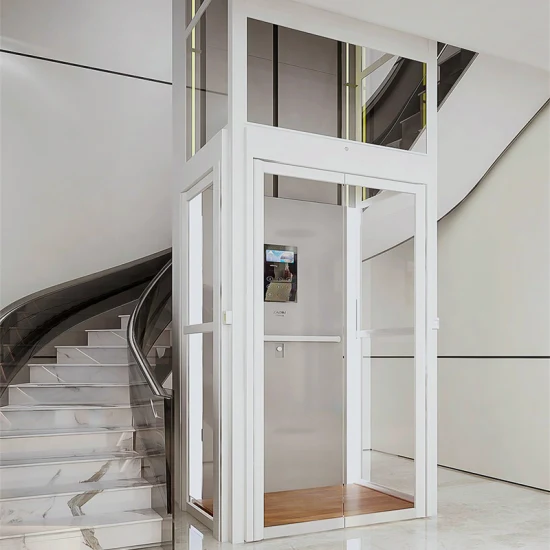Locate Trusted Lift Repair Near Me for Rapid and Affordable Service
Wiki Article
Looking Into the World of Elevators: Typical Issues Encountered by Different Lift Mechanisms
As we browse through the vertical transport systems of modern-day structures, elevators stand out as an important element of our everyday lives. From hydraulic lifts to grip systems and machine-room-less layouts, each lift type comes with its set of common issues.Hydraulic Elevators
Hydraulic lifts, usually preferred for low-rise buildings, use fluid pressure to regulate the motion of the lift automobile (lift repair companies). This mechanism entails a hydraulic pump pressing oil into a cyndrical tube, causing the elevator to relocate the desired direction. While hydraulic elevators are recognized for their quiet and smooth operation, they do come with their own set of usual issuesOne prevalent problem with hydraulic elevators is oil leakage. The seals in the hydraulic system can break in time, bring about oil infiltration. This not only develops a mess yet can additionally influence the lift's efficiency if left unaddressed. In addition, problems with the control system, such as malfunctioning shutoffs or a malfunctioning pump, can trigger disruptions in the elevator's activity.
Normal maintenance and prompt repairs are important to ensure the smooth performance of hydraulic elevators. By addressing these common concerns proactively, building proprietors can lessen downtime and guarantee the security and effectiveness of their vertical transport system.
Traction Lifts
When thinking about vertical transport systems in structures, an additional typical type apart from hydraulic elevators is the grip elevator. Grip lifts operate making use of a system of ropes and counterweights that relocate the elevator auto by gripping onto the hoist ropes. This system allows for smoother and quicker upright transport contrasted to hydraulic systems.One of the typical problems faced by traction lifts is rope wear. The continuous motion of the ropes within the grip system can lead to damage in time, potentially triggering the lift to malfunction or end up being harmful for use. Regular assessments and upkeep of the ropes are important to make certain the lift's appropriate performance and security.
An additional issue that traction lifts might experience is associated with the control system. Problems with the control system can result in problems such as irregular movement, delays in action times, or even total closures. Normal screening and maintenance of the control system are important to stop such problems and make certain the lift's reliability.
Machine-Room-Less (MRL) Lifts

Among the crucial parts of MRL lifts is the compact gearless grip machine that is mounted within the hoistway. This maker efficiently drives the lift vehicle without the demand for large tools found in typical grip lifts. Furthermore, MRL lifts usually make use of a counterweight system to stabilize the vehicle, further boosting their energy efficiency.
Regardless of their benefits, MRL lifts might face challenges associated with repair and maintenance due to the restricted space for devices installation. Access for servicing parts within the shaft can be restricted, requiring specialized training for service technicians. Correct upkeep timetables and normal examinations are essential to guarantee the ongoing smooth operation of MRL elevators.
Overloading and Weight Limitation Issues
Overloading and weight limit concerns are essential problems in lift operations. Lift producers design raises with certain weight capabilities to guarantee guest safety and security and devices longevity.When lifts are overwhelmed, it puts extreme strain on the electric motor, cords, and other parts, potentially triggering malfunctions or breakdowns. If they find excess weight, safety check it out devices such as sensors and overload sensing units are in location to prevent lifts from moving. Furthermore, exceeding weight limitations can lead to boosted power intake and deterioration on the lift system.
To reduce straining issues, developing supervisors ought to plainly show weight restrictions in lifts and educate owners on the value of sticking to these restrictions - lift repair companies. Routine upkeep checks by qualified technicians can likewise assist guarantee that lifts are operating within safe weight criteria. By addressing overloading and weight limitation concerns proactively, structure owners can enhance elevator security and performance
Electric System Failings
Surpassing weight limitations in elevators can not only lead to mechanical concerns yet likewise potentially contribute to electric system failings within the lift facilities. Electrical system failings are a critical problem in lift operation, as they can cause unanticipated shutdowns, breakdowns, or also safety hazards.Routine upkeep and examinations are important to recognize and address prospective electrical problems quickly, ensuring the effective and risk-free operation of lift systems. By adhering to weight limits and conducting routine electric system checks, structure owners can reduce the threat of electrical failures in lifts.
Verdict

Hydraulic elevators, commonly chosen for low-rise structures, utilize fluid stress to regulate the motion of the lift auto.When thinking about upright transportation systems in structures, an additional common kind apart helpful resources from hydraulic elevators is the traction lift. Grip elevators run using a system of ropes and counterweights that relocate the lift vehicle by clutching onto the hoist ropes. Unlike traditional elevators that call for a separate equipment room to house the devices, MRL lifts incorporate most of the elements within the shaft, removing the demand for a devoted maker space.In verdict, lifts face common problems such as hydraulic breakdowns, grip system failings, and electric system problems.
Report this wiki page